How to Declutter Kitchen Cabinets — 7 Simple Expert Tips to Keep Your Space Streamlined
Make your kitchen cabinets as streamlined inside as out
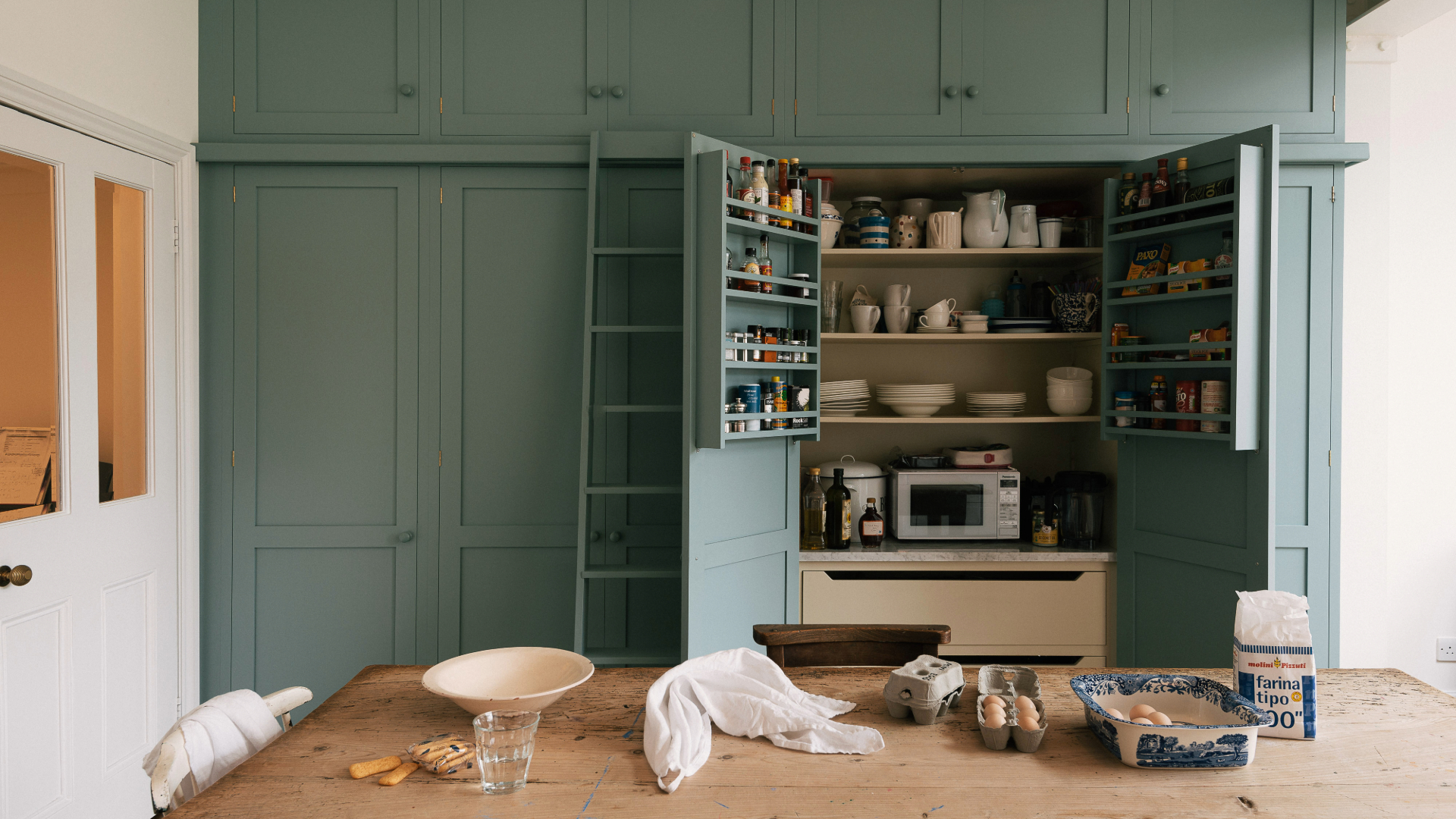

Kitchen cabinets are often a hotspot for clutter, which is why finding the right solution to remove unwanted mess is the key to success. But where do you even start?
When the average household tidies up and declutters a kitchen, they mainly focus their energy on the visible parts: countertops, the dinner table, and around the sink. In the process, kitchen cabinets either become neglected or are left as dumping grounds to hide clutter.
Designating some time to specifically target decluttering your kitchen cabinets can make all the difference, and I talked to professional organizers to help you know exactly where to start. Here's what the experts recommend.
1. Schedule time in your calendar to declutter
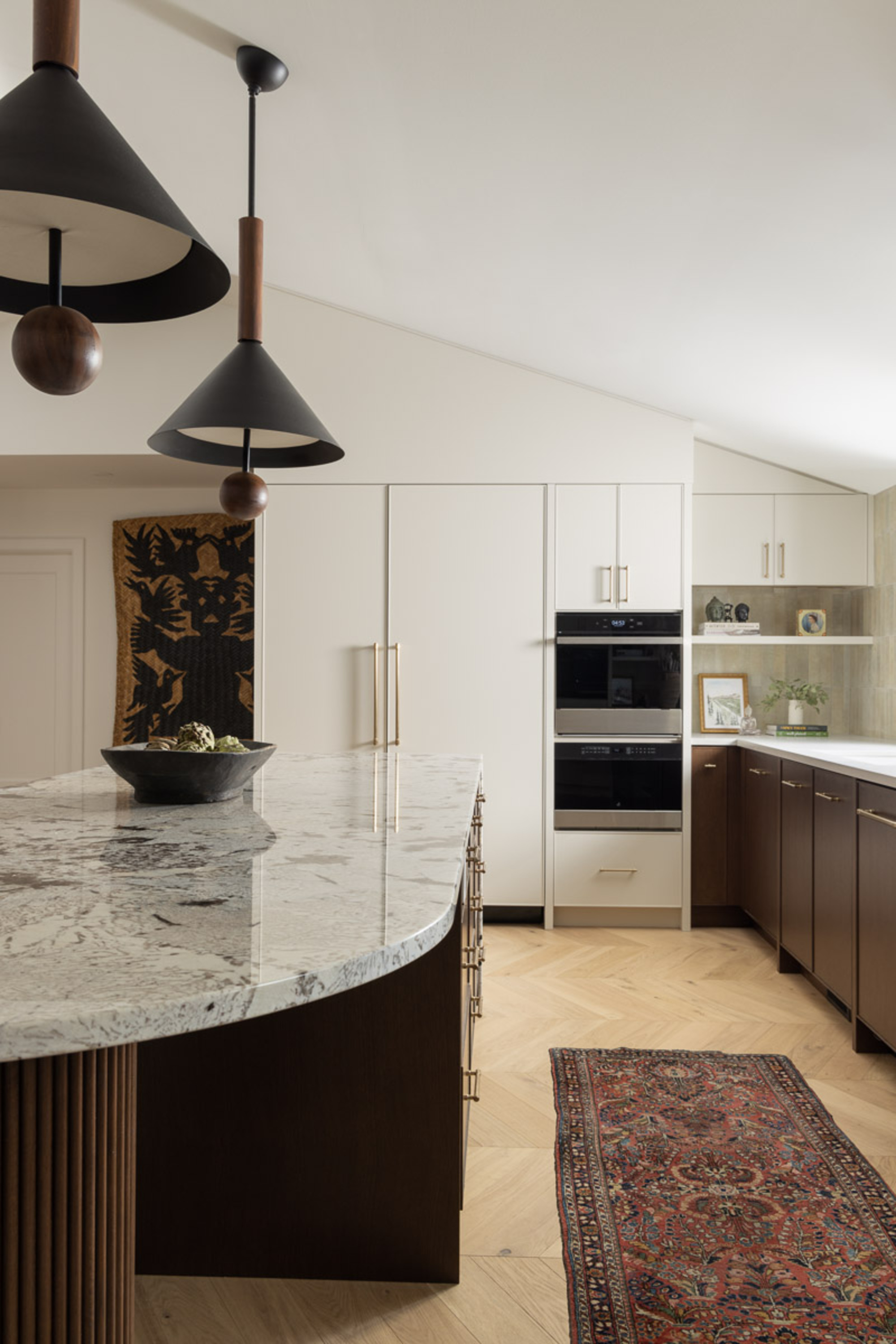
Most decluttering happens as a spur-of-the-moment thing, a byproduct of a wave of motivation. However, to thoroughly declutter your kitchen cabinets, it's important to be in the mindset to declutter your home deeper than just surface-level clutter.
Kimberly Corey, certified professional organizer and owner of Finely Sorted Organizing, says, "It's important when attempting a big declutter of an important area such as kitchen cabinets to schedule adequate time into your calendar to do the decluttering."
The size of your kitchen will impact the level of work that needs to be done, with larger kitchen spaces typically containing more cabinets. Whether you count your pantry as a kitchen cabinet can also affect the amount of decluttering that needs doing, too.
"If you have a big kitchen that has not been decluttered in years it may take a few days to completely look through," says Kim. "If possible you want to try to complete the task "in one go" as they say; more or less within the same time period because change will add complexity to your work and make the possibility it won't get completed greater."
So it's best to think about the level of work that needs to be done in your space and then carve out time accordingly to do your kitchen cabinet decluttering. This way, you'll be able to work through all of your cabinets and remain in the same undisrupted mindset throughout the process.
2. Open your cabinet doors and consider your needs
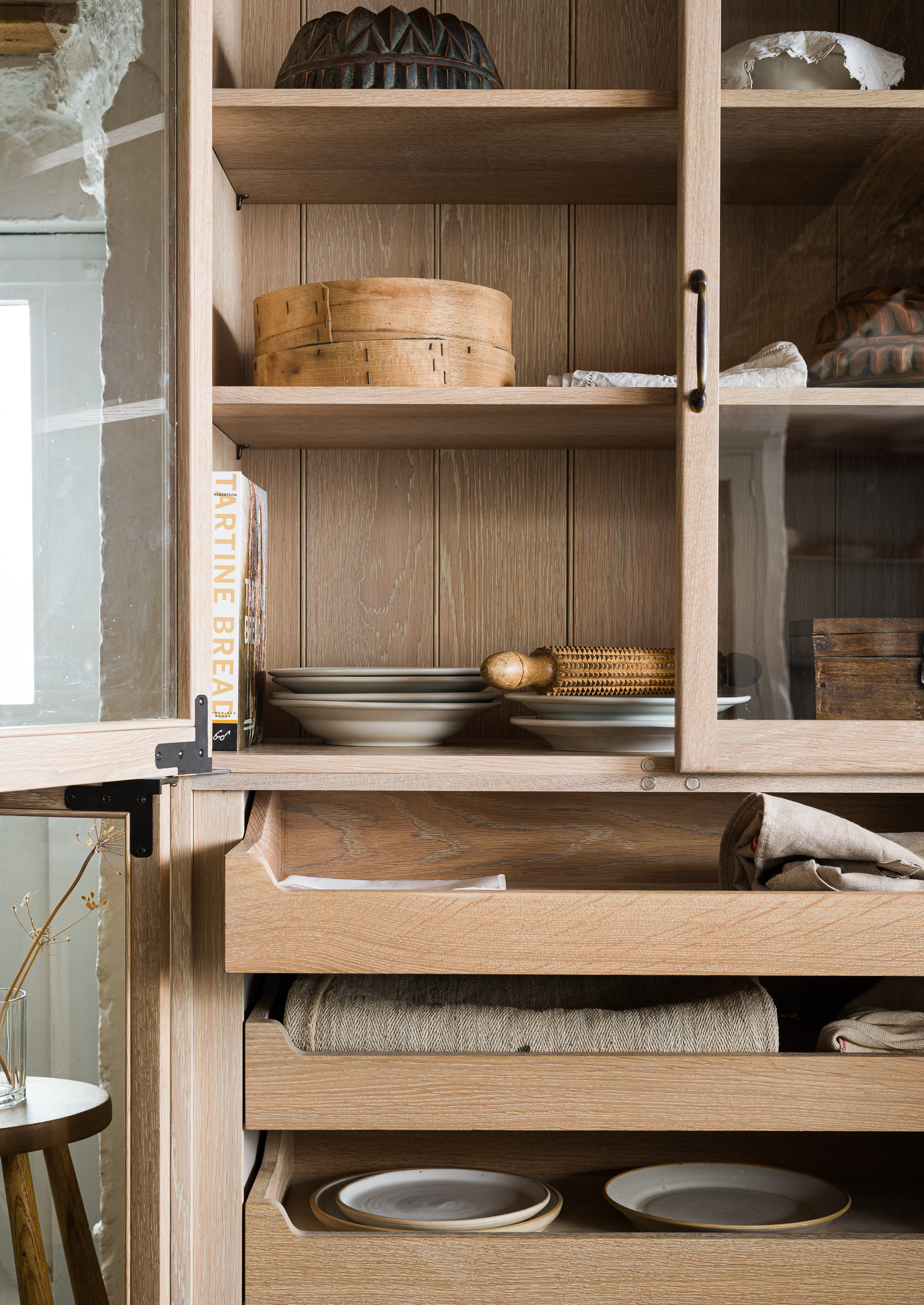
The Haberdasher's Pantry by deVOL
There's something powerful about opening the doors of all of your kitchen cabinets and just standing back to take in what is there. It isn't clutter that's on display like that which is sat on kitchen countertops, so taking time to reflect can be eye-opening.
Doing this will help you to see the space and think about what you aspire for it to become, whether that's more minimal, more in line with what you love, or generally easier to navigate.
"When decluttering cabinets there are lots of things to consider; Are you moving soon? Are you invested in your role as a host? Are you expecting any changes in your core family number soon?," says Kim. "Many of these answers will inform how you go about your work decluttering kitchen cabinets."
People who love to cook or those who have a larger family may have more kitchen counter organizers and items in their kitchen cabinets, but that's okay! Cooking equipment aligns with what you use, need, and love, so it makes sense that it takes up space in your life and in your kitchen cabinets.
If you don't cook frequently or find yourself reaching for certain items repeatedly, there are likely items in your kitchen cabinets that could easily be discarded.
3. Take everything out of your kitchen cabinets
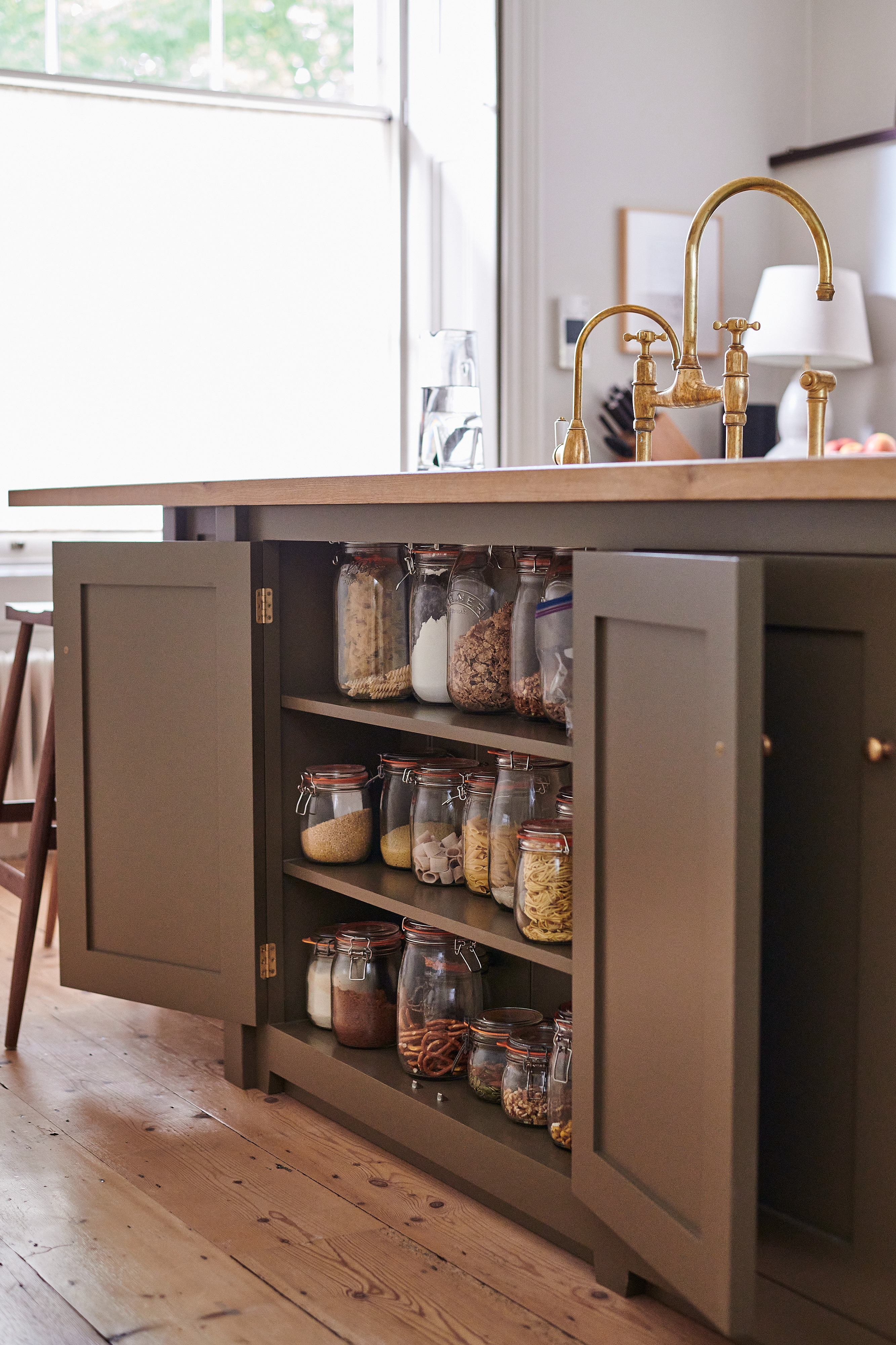
The Classic English Kitchen by deVOL
Once you've taken some time to reflect on the current state of your kitchen cabinets, it's time to delve deeply into their contents by taking absolutely everything out and sorting items into categories.
"I recommend clearing off a large countertop or surface like your dining table to sit all of your kitchen cabinet's items on so they can be clearly seen and more easily sorted," says Kim.
If you're struggling for space you can also put down a tarp on the floor like this canvas drop cloth from Amazon and sort your items on the floor.
When everything is taken out of a space, the true reality of how much is there comes to light. You may also uncover items you didn't even remember owning because they were pushed to the back of your kitchen cabinets. These items are among the first items experts say you should get rid of in your kitchen cabinets.
The main categories to sort kitchen cabinet items into include dinnerware (cutlery, bowls, plates, etc.), utensils (spatulas, whisks, rolling pins, etc.), food items, Tupperware and storage containers, appliances, cleaning supplies, and condiments. Everyone's kitchen is different, though, so if you feel you have enough of something to make it into a category on its own, go for it!
Once everything is out in the open in this way, you can begin to review the contents of your kitchen cabinets for decluttering.
Amanda Wiss, founder of NYC-based home organizing company Urban Clarity and home staging company Urban Staging, adds: "The more piles cross-contaminate, the easier it is to get lost in a pile of dishes and cookware, and the higher the risk of losing or breaking a piece that’s important to you. Working category by category is the best way forward in the decluttering process."
4. Review your items individually
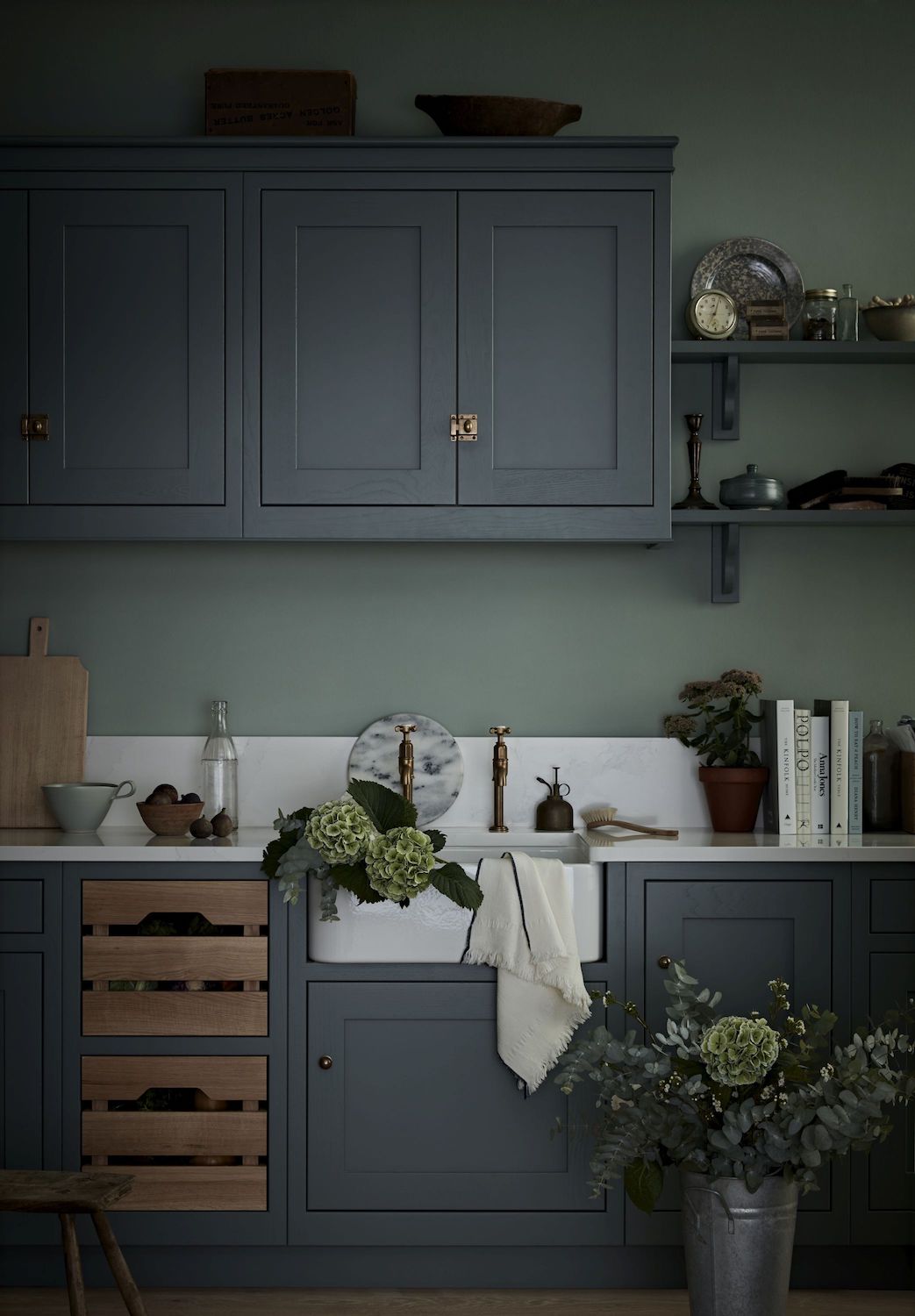
Working category by category, ask yourself questions such as: when did I last use this item? what do I like about this item? and would I purchase this item again? If you haven't used it in a long time and don't feel you would repurchase it, it's more than likely something you are ready to let go.
Ben Soreff, professional organizer and owner of House to Home Organizing, says, "The review is the most important part of the decluttering process and the part that people often skip. Sometimes it is less important to get rid of an item and more important to have a plan and know why it was ever in your life to begin with."
And who knows: if you're attached to items in your kitchen cabinets that you don't use frequently, perhaps after decluttering some other items, you will actually use them as they are more visible in the space.
"My umbrella rules are to keep what you use, need or love, and to store things where they make sense," says Kim. We'll talk more about that later!
5. Put everything back where it belongs
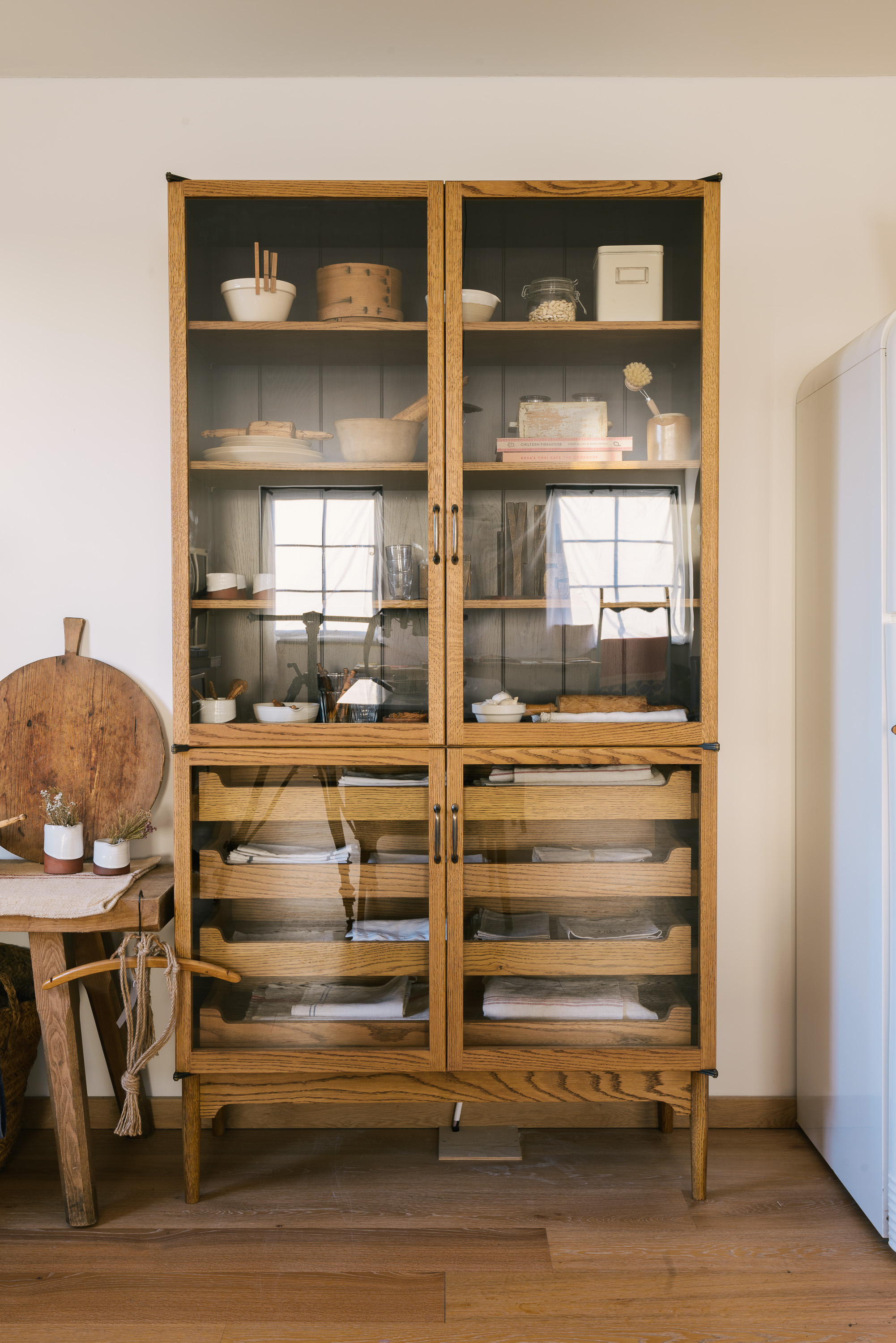
The Haberdasher's Pantry by deVOL
After everything from your kitchen cabinets has been edited down to what you wish to keep, you need to place items back into their cabinets in a way that promotes keeping clutter to a minimum. This includes keeping items in sight, in a logical order, and in a logical place. Otherwise, you may become accustomed to clutter blindness, and your cabinets will revert to their old state.
"We want to put items where they belong not where they fit," says Ben. "Cramming every dish, bowl, and cup in the cabinet is very easy, but getting them out again is a nightmare. We want to think about the next step when storing items, as well as where makes sense for them to live."
Ben continues to explain how a person can "zone" their kitchen to help streamline the space both externally as well as within their kitchen cabinets. "For instance, the cabinets near your kitchen's sink are a prime location for frequently used items," says Ben. "If the dishwasher is also nearby then everyday plates and bowls should live there. If you make coffee often your mugs and reusable hot drink bottles make sense living in the cabinet nearest to the machine."
If you really struggle to keep down the clutter in your cabinets, buying a dish rack and only allowing yourself to keep only what will fit into its space could be a game changer. If you have a larger household, you could double this amount, or you could use your dishwasher load as a measurement instead, but this ensures you will only ever have a certain amount of dishes to store or clean as a maximum at any time.
I like the simple human stainless steel frame dish rack from Target as it's stylish and spacious. However, if you have children, definitely keep more than one load!
6. Make a habit out of putting things away properly

One of the main reasons kitchen cabinets end up cluttered is because people don't put items away inside of them properly. I can completely empathize and openly admit to occasionally shoving an item or two anywhere it will fit to help make the task of organizing my kitchen faster. But it doesn't help in the long run as items get mixed up and fall where they do not belong.
Mary Jo Contello, certified professional organizer and owner of Organized By MJ, highlights the importance of making a habit out of putting items back where they actually belong the first time. "Sometimes we are in a hurry so we just shove stuff in a cabinet but in reality it only takes a few more seconds to put it back correctly. When you haphazardly shove items into your kitchen cabinets, the cabinets become a hot mess. Sometimes so much that you open them and who knows what will fall out every time."
Investing in some organizing and storage pieces like the 4-sort wire dividers, the undershelf basket, and the everything organizer shallow turntable with silicone liner, all from The Container Store, will all help bring order to your kitchen cabinets, in turn making them a space less likely to become cluttered.
If you're using some storage bins like these handy plastic storage bins with handles from The Container Store, you can up your sense of order a notch by labeling them with a simple, self-adhesive label like the Avery chalkboard labels from Walmart. When items have a home, they are far less likely to clutter up a space.
7. Remove what doesn't belong
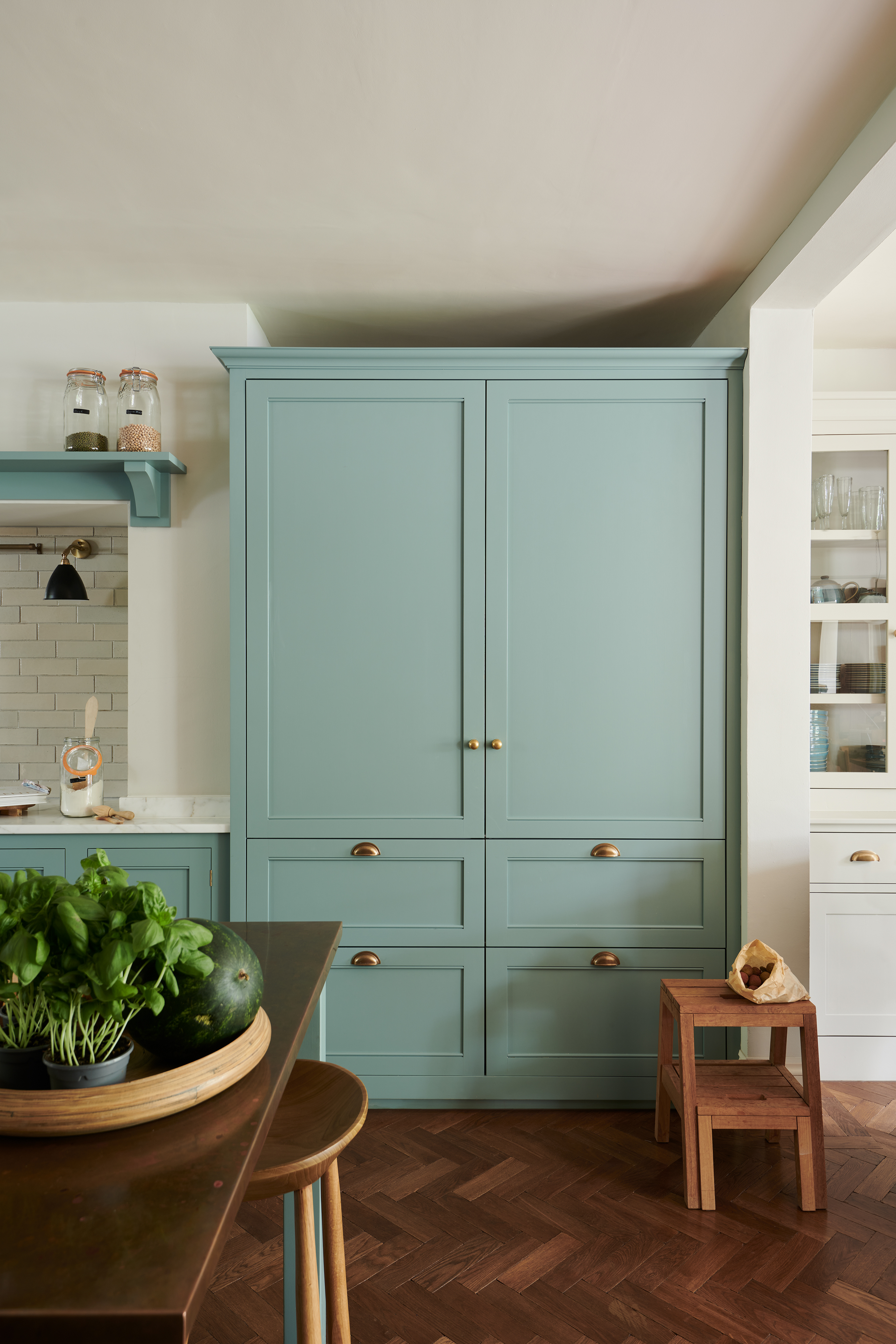
The Classic English Kitchen by deVOL
Last but not least, to declutter your kitchen cabinets, you must remove whatever didn't belong in them in the first place.
Dana Reder, professional organizer and founder of Winnow & Bloom, describes how everyday clutter can accumulate in a kitchen, which can just as easily happen inside of your kitchen's cabinets, especially as a closed space.
"The kitchen is typically the most used room in the house and is likely to become cluttered for a number of reasons," says Dana. "Mail or other paperwork piles up on the counter; something isn't returned to its designated spot and gets repurchased; tupperware parts go missing making it hard to keep organized. Because of this it's important to remove what doesn't belong, and to review and declutter your entire kitchen space regularly."
Many people include what's known as a "drop zone" in places around their home that are prone to gathering clutter. All you need to do this is a spacious box or basket like the mainstays large easy access plastic storage bin from Walmart and a corner to tuck it into. Then, whenever you notice a piece of clutter in your kitchen cabinets, take it out in that moment and place it in the drop zone. Address the clutter in your drop zone weekly if possible, taking time to return the contents to their proper homes.
How often should I declutter my kitchen cabinets?
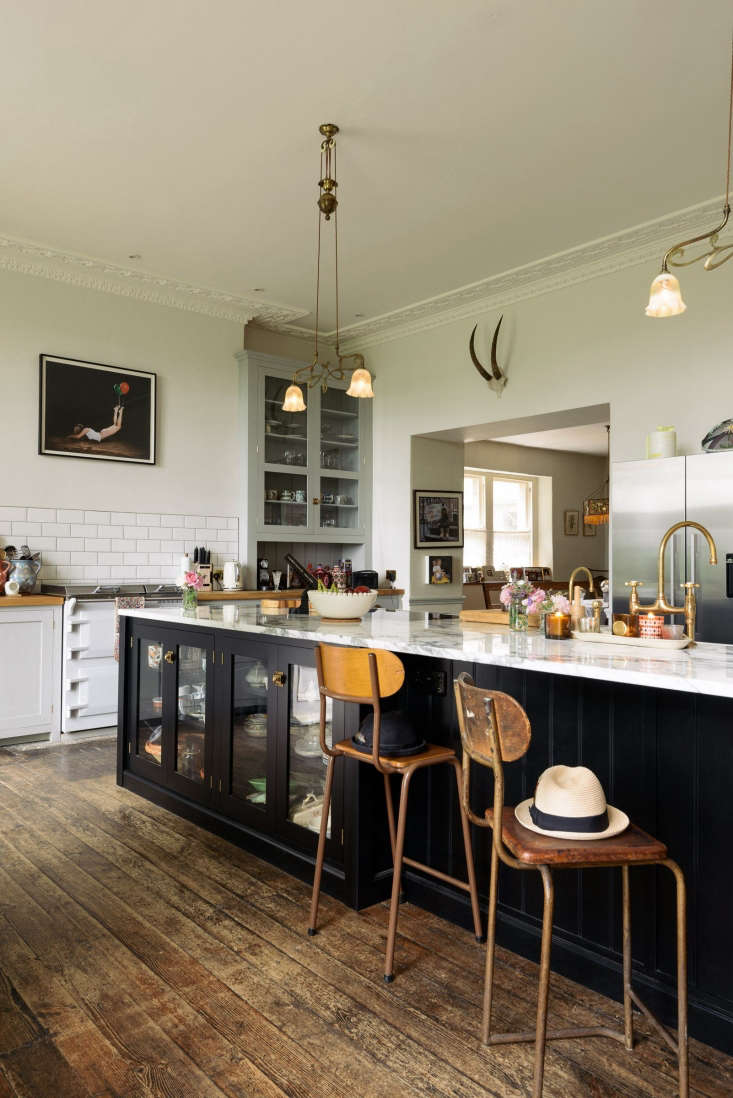
How often a person declutters their kitchen cabinets can vary depending on the size of the kitchen and how busy a family's lifestyle is.
Mary Jo Contello, certified professional organizer and owner of Organized By MJ, suggests using the following schedule as a guidance for how often to declutter your kitchen cabinets, but feel free to adapt it to suit your needs.
"I like to look over spaces a couple of times a year and do a good purge/reorganize for heavy traffic spaces," says Mary. "It's also important to clean out a cabinet as soon as you notice it starting to get out of control."
FAQs
Why do kitchen cabinets get cluttered?
As noted by Amanda Wiss, founder of NYC-based home organizing company Urban Clarity and home staging company Urban Staging: "Kitchen cabinets become cluttered because we often reach into them with urgency. Whether it’s putting dishes away in a hurry to make room or to finish the arduous chore, or it’s grabbing serving bowls quickly as guests arrive, your kitchen cabinets endure a lot of shuffling around on a daily basis. Unless you reset everything in its place at the end of every night, it’s easy to let a kitchen cabinet get overwhelming and need decluttering."
By sticking to rules such as putting items away in the correct place at the end of each day or directly after use, and keeping your kitchen cabinets organized, everything will be easier to find and cause less stress in your home.
Be The First To Know
The Livingetc newsletters are your inside source for what’s shaping interiors now - and what’s next. Discover trend forecasts, smart style ideas, and curated shopping inspiration that brings design to life. Subscribe today and stay ahead of the curve.

Ciéra is a writer and regional laureate with particular passions for art, design, philosophy and poetry. As well as contributing to Livingetc, she's an Editorial Assistant for Design Anthology UK and a contributing writer for Homes & Gardens and Apartment Therapy. Previous commendations of hers include being Highly Commended by The Royal Society of Literature and receiving a prestigious MA Magazine Journalism scholarship to City, University of London.
-
 The 'New British' Style? This Victorian London Home Embraces Its Owners' Global Background
The 'New British' Style? This Victorian London Home Embraces Its Owners' Global BackgroundWarm timber details, confident color pops, and an uninterrupted connection to the garden are the hallmarks of this relaxed yet design-forward family home
By Emma J Page
-
 Muji Living Room Ideas — 5 Ways to Harness The Calming Qualities of This Japanese Design Style
Muji Living Room Ideas — 5 Ways to Harness The Calming Qualities of This Japanese Design StyleInspired by Japanese "zen" principles, Muji living rooms are all about cultivating a calming, tranquil space that nourishes the soul
By Lilith Hudson
-
 These Are the Dos and Don'ts of Bamboo Plant Placement — Follow This to Avoid Bad Feng Shui
These Are the Dos and Don'ts of Bamboo Plant Placement — Follow This to Avoid Bad Feng ShuiBy following the experts' guidance on where to place this houseplant you can usher luck, wealth, and prosperity into your home
By Lilith Hudson
-
 Is It Okay to Have a Mirror Facing a Door in Feng Shui? The Verdict Is In and It Just Might Surprise You
Is It Okay to Have a Mirror Facing a Door in Feng Shui? The Verdict Is In and It Just Might Surprise YouDecorating your home with mirrors calls for intention if you're dressing your space in accordance with Feng Shui. Here's what you should know.
By Amiya Baratan
-
 4 Things to Unpack as Soon as You Move House — For a Comfortable and Organized Fresh Start
4 Things to Unpack as Soon as You Move House — For a Comfortable and Organized Fresh StartIf you have a major move in the works and you're looking to prepare in advance, this is the starter kit you need to properly set up your new home.
By Amiya Baratan
-
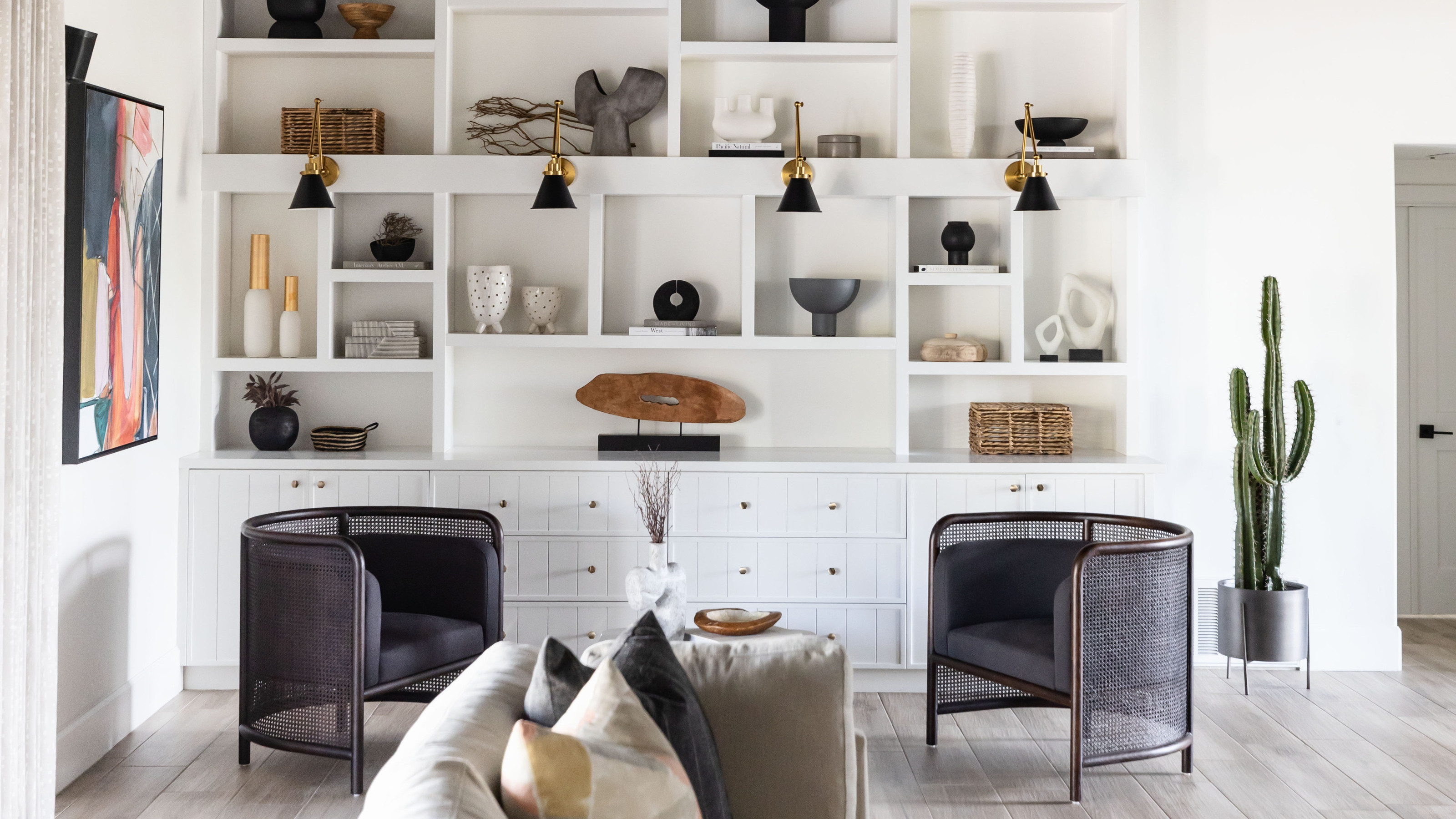 The "Reverse Decluttering" Method Flips Everything You Thought You Knew About Getting Rid of Stuff on Its Head
The "Reverse Decluttering" Method Flips Everything You Thought You Knew About Getting Rid of Stuff on Its HeadThis unconventional technique helps prioritize the items you actually love for a quicker and more effective sort-out, and it's being lauded by experts
By Lilith Hudson
-
 10 Decluttering Challenges to Have on Your Radar This Year — For a Tidier, More Mindful Home
10 Decluttering Challenges to Have on Your Radar This Year — For a Tidier, More Mindful HomeIf you're interested in transforming your home for the better, here are 10 decluttering challenges I recommend for a professionally tidy space.
By Amiya Baratan
-
 Biophilic Decluttering — What to Take Out of Your Home (and What to Put in) for a More Natural Home
Biophilic Decluttering — What to Take Out of Your Home (and What to Put in) for a More Natural HomeTry your hand at biophilic decluttering to ground your interiors, connect to the environment, and cure chronic clutter in one go. Here's how.
By Amiya Baratan
-
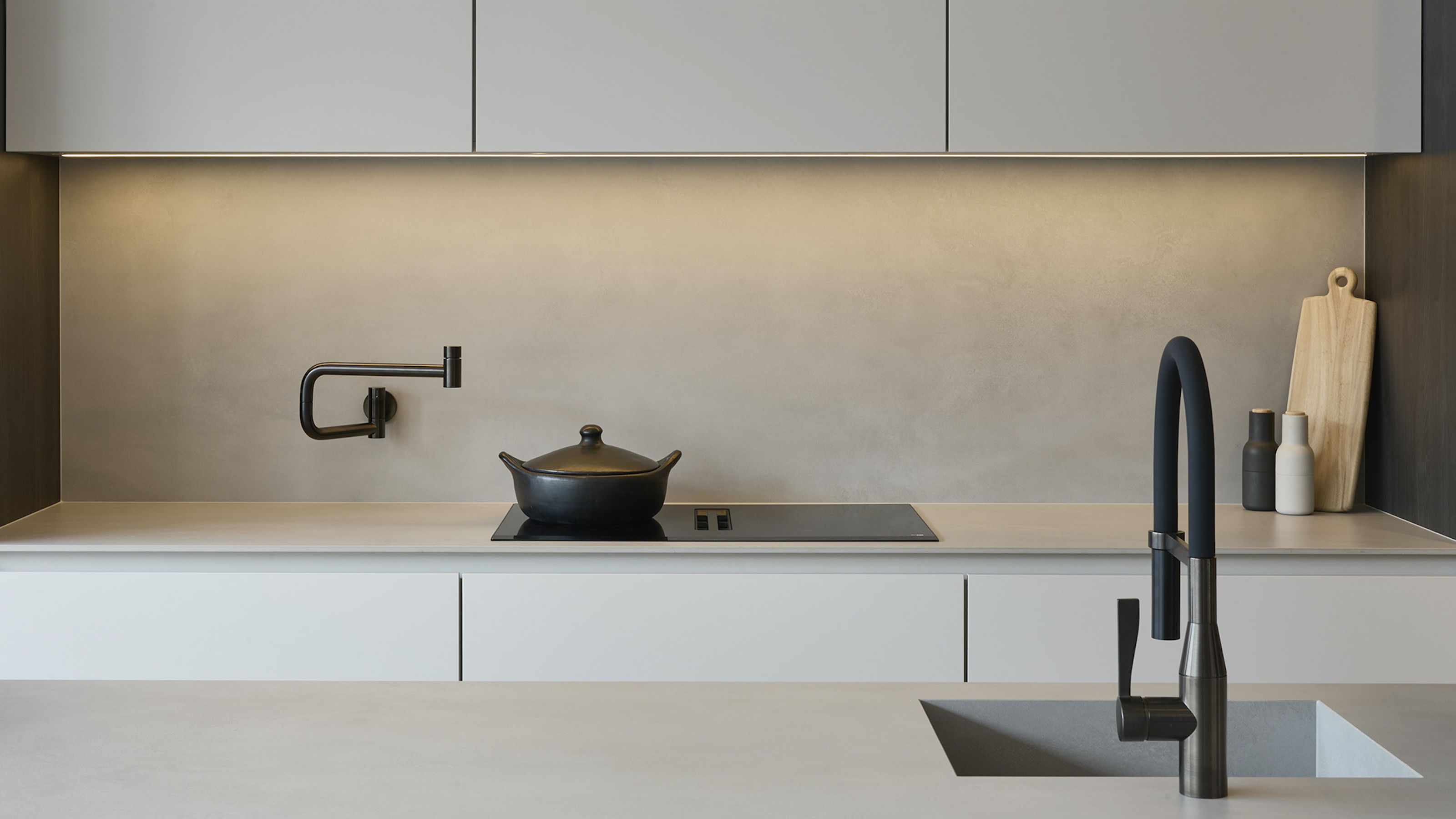 The 10 Different Types of Kitchen Taps — And the Pros and Cons of Each One to Know Before You Pick
The 10 Different Types of Kitchen Taps — And the Pros and Cons of Each One to Know Before You PickFrom sleek pull-outs to vintage bridge taps, explore 10 kitchen tap styles that mix function, flair, and a splash of cool
By Linda Clayton
-
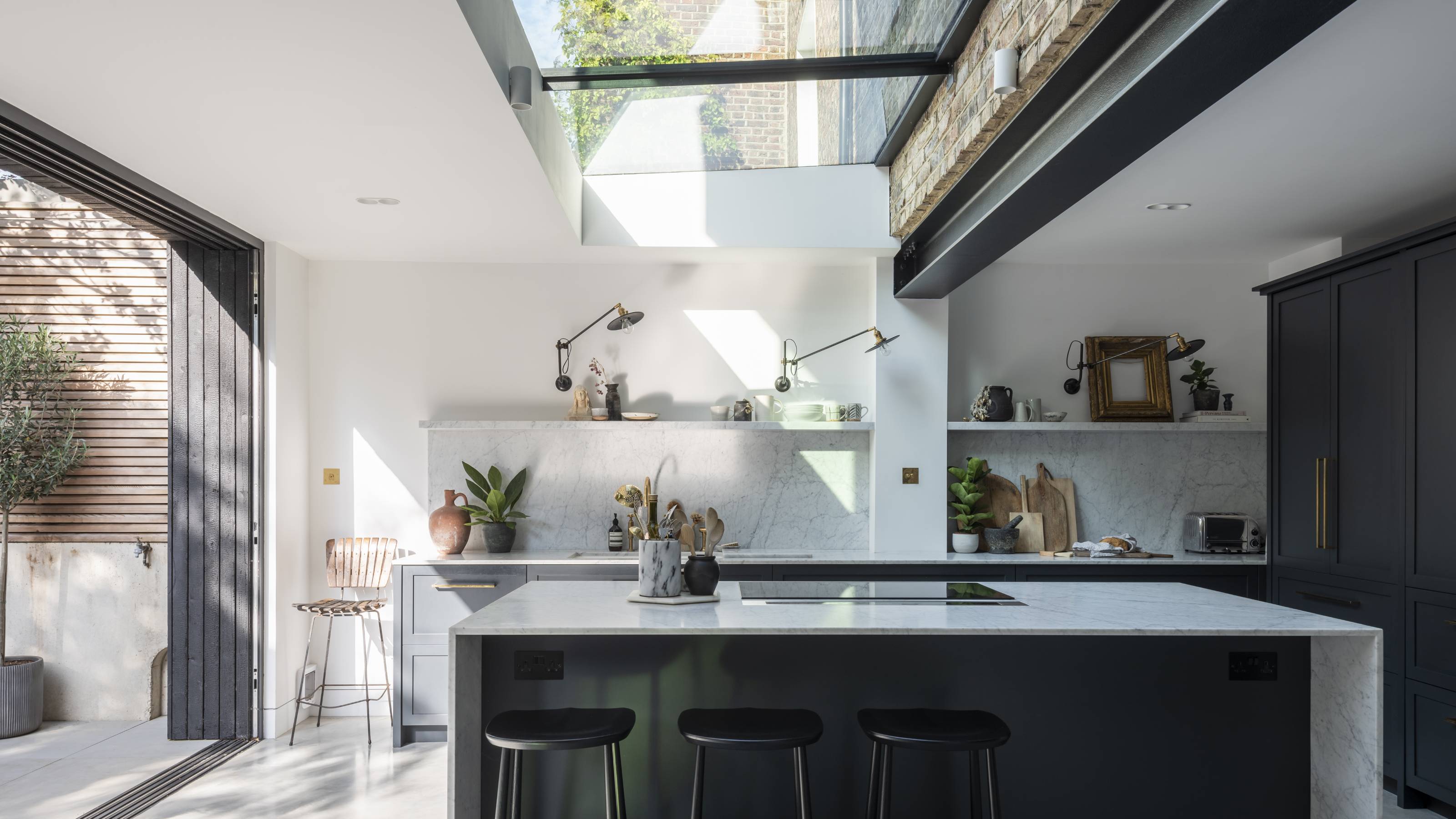 How Much Does an Extension Cost in 2025? Renovation and Design Experts Break Down Your Budget
How Much Does an Extension Cost in 2025? Renovation and Design Experts Break Down Your BudgetExplore how much different types of extensions cost in 2025 to budget for your project accurately
By Amy Reeves